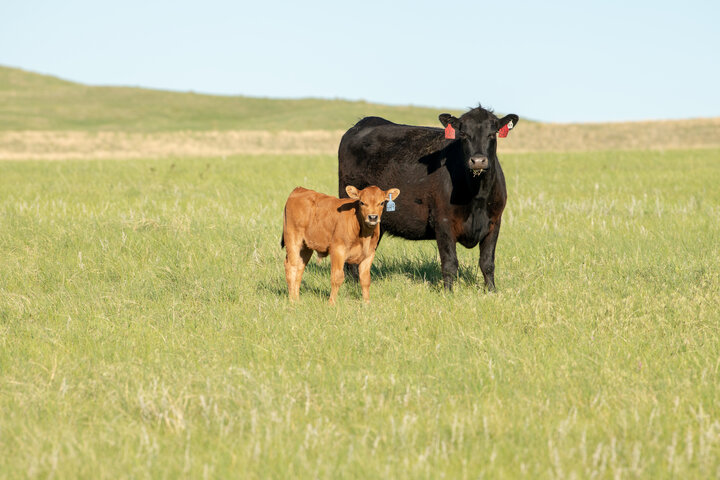Many producers have moved from spring to summer calving to avoid death loss from inclement early spring weather and to see a reduction in labor and winter feed costs. Just as there are upsides to changing timing of calving, there are also downsides, which may include reproductive challenges and decreased calf weaning weight. It is important to understand the change in management practices when converting to a summer calving herd.
Summer calving, which will generally take place during May or June, means that the breeding season will take place during approximately August or September. Forage quality of upland native range peaks in June and steadily declines in July until November. This decrease in forage quality creates nutrient deficiencies in energy and metabolizable protein, which then creates a situation where cows are in a negative energy balance or losing weight before the start of the breeding season. Low-quality forage, nutrient deficiencies, and weight loss can result in decreased pregnancy rates. This is most often more of a challenge in young range cows. Young cows are still growing and lactating with their 1st or 2nd calf and do not always have the ability to consume enough forage (energy) to meet their nutrient requirements for maintenance, lactation, and growth.
Due to calving on and grazing high-quality forages during early lactation, summer calving cowherds can have greater body condition scores prior to the breeding season than spring cowherds. Cows with greater body condition scores have increased nutrient requirements than thinner cows, which may result in increased body weight loss during the breeding season when coupled with decreasing forage quality. Although body condition score can be an indicator of reproductive success, direction of body weight change going into and throughout the breeding season may play a larger role in pregnancy rates as shown in Table 1. With many summer calving herds and especially young cows within those herds, this decreased postpartum energy time and the resulting direction of body weight change can play a large part in the subsequent reproductive performance.
Table 1. Impact of calving BCS and postpartum energy intake on pregnancy rate in beef cows
|
BCS Prior to Calving |
BCS 90 d after Calving |
Postpartum Energy Intake, lb/d |
Pregnancy Rate, % |
|
6.5 |
5.1 |
8 |
77 |
|
4.4 |
5.2 |
16 |
95 |
Adapted from Wiltbank et al. (1962).
Due to a sharp decline in forage quality prior to the start of the breeding season, a supplementation strategy may be needed to maintain body weight and body condition score while improving reproductive performance. Previous research at Gudmundsen Sandhills Laboratory (https://beef.unl.edu/documents/2020-beef-report/MP108-2020-01.pdf) has shown that metabolizable protein and energy are deficient in upland native range starting the first of July. In July when metabolizable protein deficiency occurs, protein supplements high in rumen degradable protein will likely not correct the metabolizable protein and energy deficiencies and may be a less effective strategy to improve cow performance. Therefore, the type of protein (rumen degradable vs. rumen undegradable protein) being fed is important in improving cow performance. Supplementation with a high rumen undegradable protein supplement with increased fiber energy content such as distillers grains may still be needed in young cows to help meet the requirement of metabolizable protein and energy, which may improve body weight and reproductive performance.
Interviews with the authors of BeefWatch newsletter articles become available throughout the month of publication and are accessible at https://go.unl.edu/podcast.

